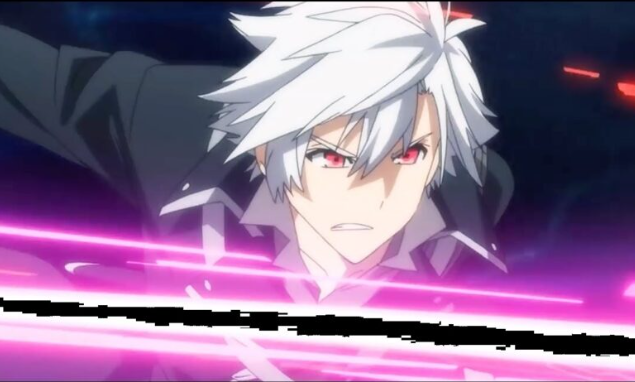Introduction
In a world where family ties can sometimes fracture beyond repair, the concept of the disowned child emerges as a poignant narrative. These children embody a unique struggle, often wrestling with feelings of abandonment and identity. The story does not end there; it unfolds into deeper realms that delve into emotional landscapes fraught with turmoil and resilience. As we explore “the disowned child: chronicles of unleashed divine bloodlust,” we expose more than just pain—we uncover strength, survival instincts, and an unquenchable thirst for acceptance. This journey will take you through their experiences and challenges while shedding light on what it truly means to be cast aside by those who are supposed to love unconditionally. Let’s embark on this illuminating exploration together.
What is a Disowned Child?
A disowned child is someone who has been rejected or excluded by their family, often in a deeply emotional and traumatic manner. This rejection can stem from various reasons, including personal conflicts, lifestyle choices, or misunderstandings within the family.
These children may experience feelings of abandonment and isolation. They are left to navigate life without familial support, which can be incredibly challenging.
The term goes beyond just being estranged; it carries an intense emotional weight. Disowned children frequently grapple with identity issues as they try to understand where they fit into the world without their family’s acceptance.
This lack of connection can profoundly affect their relationships with others. Trust becomes difficult when one feels unworthy of love or belonging due to past rejections.
Common Characteristics of Disowned Children
Disowned children often wear their emotions like armour. They may display a heightened sensitivity to rejection, leading them to withdraw in social contexts. This can create an invisible barrier between them and others.
Many exhibit feelings of worthlessness or inadequacy. The absence of familial support leaves deep scars that manifest as low self-esteem. These kids might constantly seek validation from peers, yearning for acceptance they never received at home.
Trust issues are common too. When the primary source of love becomes a source of pain, forming new relationships can feel impossible. They tread lightly around emotional connections, fearing abandonment once more.
Creativity can flourish in disowned children as well. Many channel their turmoil into art, writing, or music. It serves as both an outlet and a coping mechanism—a way to voice what remains unspoken in daily life.
The Impact of Being a Disowned Child
Being a disowned child carries profound emotional consequences. The sense of rejection can manifest as low self-esteem and feelings of worthlessness. Many struggle with their identity, caught between the desire for acceptance and the pain of abandonment.
Social relationships often suffer, too. Trust issues may arise, making it difficult to connect with others. Disowned children might isolate themselves, fearing further rejection.
The psychological toll is significant. Anxiety and depression are common among those who experience such familial estrangement. They may grapple with anger directed at themselves or their family.
Additionally, these children frequently face societal stigma. Misunderstandings about their situation can lead to judgment from peers or even strangers.
Navigating life without parental support complicates decision-making processes later on, too. Choices around friendships, careers, and romantic partnerships become laden with uncertainty rooted in past experiences.
Strategies for Coping with Being a Disowned Child
Coping with the pain of being a disowned child can feel overwhelming. Finding ways to express your emotions is crucial. Journaling offers a safe space to explore your thoughts and feelings without judgment.
Building a support network is essential as well. Seek out friends, mentors, or even therapists who understand what you’re going through. These connections can provide validation and comfort during tough times.
Engaging in creative outlets like art or music can transform negative energy into something beautiful. This process allows for healing while also giving voice to unspoken feelings.
Practicing mindfulness techniques helps ground you in the present moment. Meditation, deep breathing exercises, or yoga promote emotional stability amidst chaos.
Establishing personal goals fosters a sense of purpose. Focus on self-improvement and passions that ignite joy within you; this journey strengthens resilience against past hurt.
Healing and Moving Forward as a Disowned Child
Healing as a disowned child requires patience and self-compassion. Recognizing your pain is the first step toward liberation. Acknowledging that you are not alone can be empowering.
Seek support from trusted friends or professionals who understand the complexities of your situation. Sharing your story often opens pathways to healing. Group therapy can also provide a sense of community and validation.
Engaging in creative outlets, like writing or art, allows for expression without judgment. This form of release helps process emotions that might feel too intense otherwise.
Mindfulness practices such as meditation or yoga can ground you in the present moment. These techniques foster resilience by helping to quiet racing thoughts about past hurts.
Forgiveness doesn’t mean excusing hurtful behaviour; it’s more about freeing yourself from its weight. Focus on building new relationships that nurture rather than deplete your spirit.
Conclusion
Understanding “the disowned child: chronicles of unleashed divine bloodlust” involves peeling back layers of emotional complexity. These children often carry burdens that most cannot fathom. Their experiences shape their identities in profound ways, influencing how they relate to themselves and others.
Recognizing common characteristics can foster empathy and support for those navigating this tumultuous path. It’s crucial to acknowledge the impact these experiences have on mental health and relationships. With effective coping strategies, disowned children can find resilience within themselves.
Healing is a journey filled with ups and downs. It requires patience, self-compassion, and sometimes professional guidance. Embracing one’s identity as a disowned child doesn’t mean succumbing to past pain; rather, it means transforming that pain into strength.
As we explore the chronicles of unleashed divine bloodlust through their eyes, we uncover stories of survival against all odds. The narrative shifts from despair to empowerment—a testament to the human spirit’s ability to rise above adversity while reclaiming one’s rightful place in the world.




